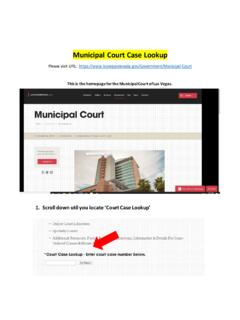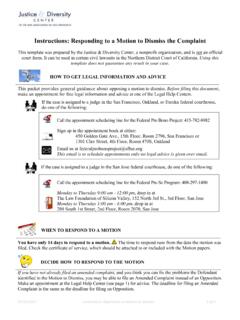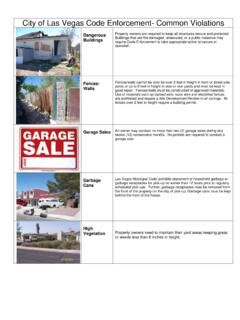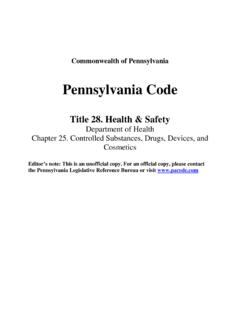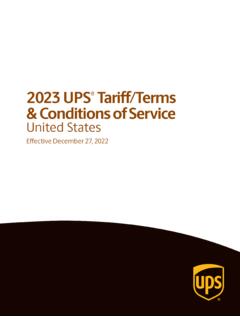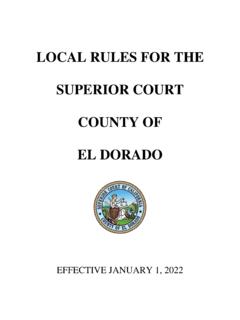Transcription of GMP Requirements
1 2016. ALL RIGHTS RESERVED. GMP Requirements Gabriel Kaddu, Senior GMP Specialist Promoting the Quality of Medicines Program (PQM) Pharmacopeial Convention (USP) 2016. ALL RIGHTS RESERVED. 3 GMP Procedures and standards used for WHO Prequalification (PQ) inspections Observed deficiencies during Inspections Common Manufacturers Deficiencies (PQM experience) Outline What is GMP? GMP ensures the quality of drugs, medical devices, blood, and some types of food. The regulations cover manufacturing, facilities and controls for the manufacturing, processing, packaging or holding of a drug product. These were a response to concerns about substandard drug manufacturing practices occurring in the past.
2 GMP refers to the Good Manufacturing Practice Guides published by the WHO/EU/PIC/S or Regulations published by the FDA under the Federal Food, Drug, and Cosmetic Act. 4 oHistory of poor manufacturing techniques resulted in deaths and injuries. oA consumer usually cannot detect (through smell, touch, or sight) that a drug product is safe or if it will work. oTesting alone is not adequate to ensure quality. 5 Why GMP? Photos March of Dimes cGMP cGMP Requirements are flexible to allow each manufacturer to decide how to best implement the necessary controls using scientifically sound design, processing methods, and testing procedures. Flexibility allows companies to use modern technologies and innovative approaches to achieve higher quality through continual improvement.
3 6 2016. ALL RIGHTS RESERVED. 7 WHO Prequalification: Inspection Activities Prequalification WHO route Dossier Q/E PQ GMP/GCP PQ SRA* route Innovators Generics Simplified procedure PQ *Stringent Regulatory Authority APIs, FPPs, BE/CROs, QCLs 2016. ALL RIGHTS RESERVED. 8 Overview of Inspection Activities Planning and scheduling audit Conducting document review Conducting audit Prepare inspection report Conducting follow-up Preparing for on-site activities 2016. ALL RIGHTS RESERVED. 9 Scope: Compliance with guidelines: GMP for API and FPP sites GCP for CROs GLP for FPP/API factory Compliance with the dossier and commitments: Data verification data manipulation, falsification, (validation, stability, clinical, bioanalytical) Prequalification: Inspection Processes 2016.
4 ALL RIGHTS RESERVED. Components Premises Equipment Personnel Procedures Environment Factors for Quality Products Quality Management Basic Requirements for GMP defined and systematically reviewed processes steps validated resources: personnel, buildings, equipment, materials written procedures operators records, failure investigations storage and distribution system handling 11 2016. ALL RIGHTS RESERVED. 12 Premises and Equipment Design and maintenance of facilities Calibration and testing of equipment Design and maintenance of equipment Control of environment 2016. ALL RIGHTS RESERVED. 13 Premises Design and construction of premises: Adequate segregation Logical process flow Adequate provision for Utilities: HVAC, water, compressed gases Design and management of the dust control and HVAC system: Contain dust at point of generation Effective air filtration (HEPA) in multipurpose plant with re-circulated air Adequate pressure differentials: avoid reversal of air flow Sequence of switching on and off of AHUs of adjacent areas WHO GMP: Main Principles Mix-ups Contamination Cross contamination 2016.
5 ALL RIGHTS RESERVED. 14 Production Manufacturing Documentation Contamination microbial Contamination physical In process controls Environmental monitoring Segregation / clearance Sterility assurance 2016. ALL RIGHTS RESERVED. 15 Three primary considerations to be addressed to ensure a safe and productive manufacturing facility Design Considerations: Manufacturing Facility Source: WHO Prevent contact with dust Prevent contact with fumes Acceptable comfort conditions cross-contamination Protect from product Protect from ambient contamination contamination Prevent of staff Correct temperature and humidity Avoid dust discharge Avoid fume discharge Avoid effluent discharge PERSONNEL PROTECTION PRODUCT PROTECTION ENVIRONMENT PROTECTION GMP MANUFACTURING ENVIRONMENT 2016.
6 ALL RIGHTS RESERVED. 16 Contaminants are : Products or substances other than product manufactured Foreign products Particulate matter Micro-organisms Cross-contamination is a particular case of contamination Contamination of a starting material, or of a product with another starting material or product. What are Contaminants? Photo credit: David Buckley Source: WHO 2016. ALL RIGHTS RESERVED. Photo credit: David Buckley 2016. ALL RIGHTS RESERVED. 18 Materials Management Technical Agreements with suppliers / contractors Supplier / contractor audit Warehousing / distribution TSE /BSE compliance Starting materials / APIs 2016. ALL RIGHTS RESERVED. 19 Materials Goods and materials management: Starting materials: Sourcing and sampling ID per container Packaging materials: Adequate sampling Intermediate and bulk products Holding time set, justified and respected Finished products: Release procedures Adequate review by QA or QP all deviations reviewed and closed Rejected materials and products: Adequate segregation or disposal Reagents and culture media: Growth Promotion Test (GPT), positive and negative control Reference Standards: Adequate standardisation, storage and use WHO GMP: Main Principles 2016.
7 ALL RIGHTS RESERVED. 20 Personnel Training and Personal Hygiene Key duties 2016. ALL RIGHTS RESERVED. 21 Personnel Personal Hygiene: Medical examination prior to and during employment Eye examination for visual inspectors Personal hygiene training Protective wear Reporting apparent illness or open lesions Training: Adequate staff with skills for assigned roles Training: on recruitment, continuing training, Training records Practical effectiveness of training periodically assessed WHO GMP: Main Principles for Pharmaceutical Products 2016. ALL RIGHTS RESERVED. 22 Quality Management Quality Systems Investigation of deviations Change Control CAPA Complaint and product recall Self Inspection Quality Management Requirements for QA Systems products are developed correctly managerial responsibilities SOPs for production and control supply and use of correct starting materials controls for all stages of manufacture and packaging.
8 Finished product correctly processed and checked before release products are released after review by authorized person storage and distribution self-inspection 23 2016. ALL RIGHTS RESERVED. 24 Quality Control Documentation specifications Finished product testing stability, chemical & microbial Testing of starting materials and packaging components Sampling materials Computerised systems 2016. ALL RIGHTS RESERVED. 25 Qualification, Calibration and Validation: Qualification: Equipment and systems (HVAC, Water, etc.) Calibration: Should cover the working range Process validation: Evidence of consistency data integrity Product Recalls Effectiveness of recall procedures assessed and regularly evaluated mock recall Notification of authorities and clients: DRA of the country, overseas customers, or DRAs notified Contract Production and Analysis Contract acceptors evaluated before awarding them contracts Responsibilities of contract giver and receiver clearly defined WHO GMP: Main Principles 2016.
9 ALL RIGHTS RESERVED. 26 WHO Deficiencies: API Sites Top 10 Areas for Improvements: 2014 , Maintenance and Cleaning of Equipment Quality Review (PQR) Validation Systems data integrity Controls and Packaging Operations , Maintenance & Cleaning of Production Premises Control of out of specification (OOS), Deviations Risk Management 2016. ALL RIGHTS RESERVED. 27 WHO Deficiencies: FPP Sites Top 10 Areas for Improvements: 2014 1. Product Quality Review (PQR) , Maintenance and Cleaning of Equipment Systems data Integrity & Cross Contamination (physical/chemical) of Deviations, out of specification (OOS) & Cross Contamination (microbial) Controls & Maintenance of HVAC system , Maintenance & Cleaning of Production Premises Control UK MHRA Deficiencies 2014 Source.
10 28 FDA Warning Letters Typical Headings Failure to prevent unauthorized access or changes to data and to provide adequate controls to prevent omission of data Failure to investigate and document out-of-specification results Failure to include adequate documentation during complaint investigation Failure to maintain complete data derived from all testing and to ensure compliance with established API specifications and expectations pertaining to data retention Failure of your quality unit to ensure that materials are appropriately tested and the results are reported Failure to ensure reprocessing procedures consistently yield API meeting its intended specification Failure to record activities at the time they are performed 29 2016.


